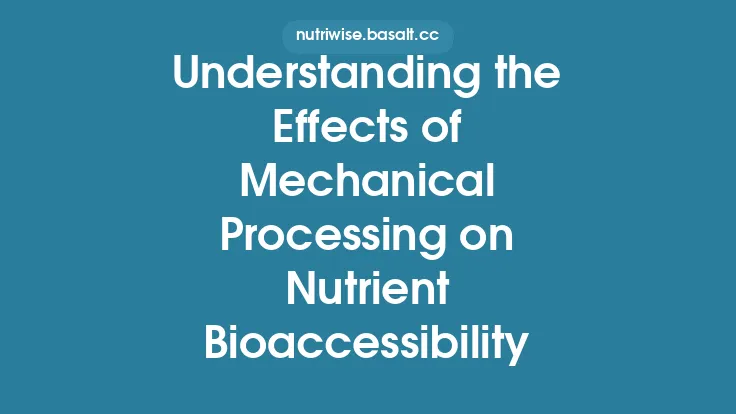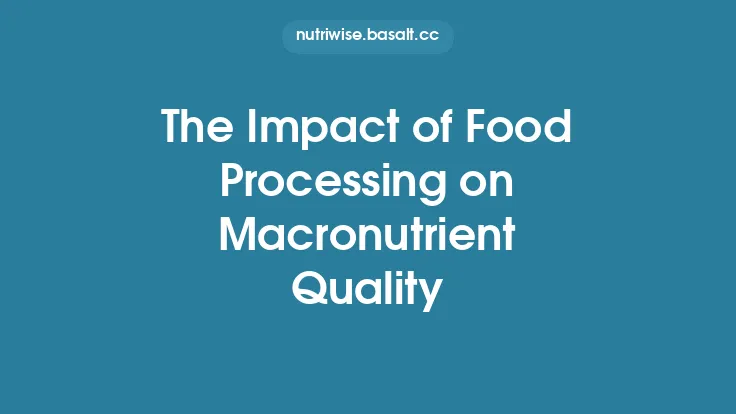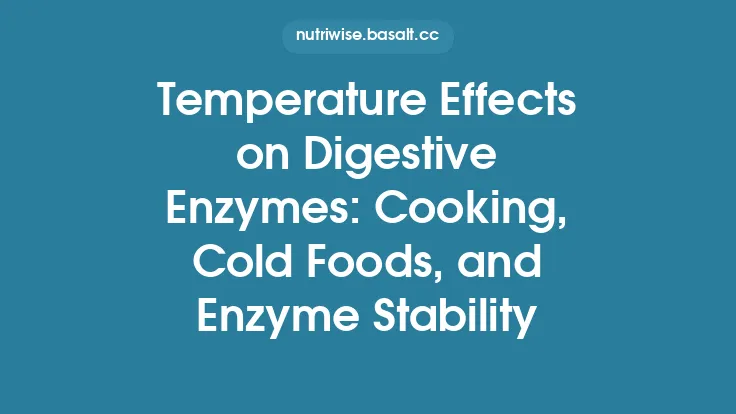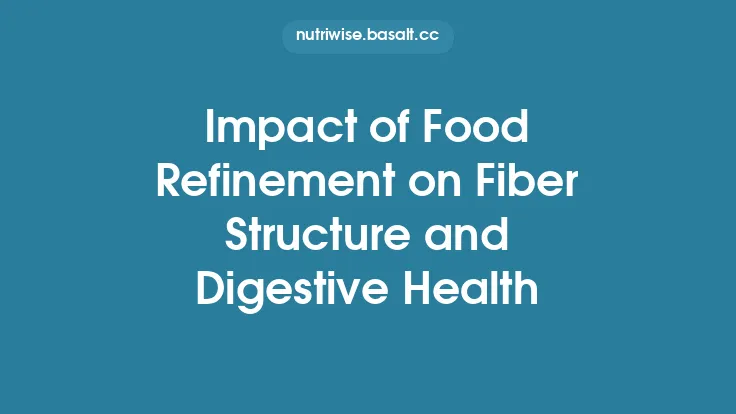High‑pressure processing (HPP), also known as pascalization, has become a mainstream non‑thermal technology for extending the shelf life of a wide variety of foods while preserving their fresh‑like qualities. By subjecting foods to pressures ranging from 100 to 600 MPa for a few seconds to several minutes, HPP inactivates microorganisms and enzymes without the high temperatures that typically cause extensive chemical changes. While the immediate effects of HPP on microbial safety and sensory attributes are well documented, the long‑term consequences for food texture and digestibility are equally important for both manufacturers and consumers. This article explores the mechanisms by which high pressure alters food structure, the resulting changes in texture over storage, and how these structural modifications influence the digestive process from the oral cavity to the small intestine.
1. Mechanistic Foundations: How Pressure Reshapes Food Matrices
1.1. Protein Conformation and Aggregation
Under high pressure, the volume of a protein’s folded state is typically larger than that of its unfolded state. Consequently, pressure favors partial unfolding, exposing hydrophobic residues and promoting new intermolecular interactions. The degree of unfolding depends on the protein’s intrinsic stability, the presence of disulfide bonds, and the pressure‑time profile. In many muscle foods, myofibrillar proteins such as myosin and actin undergo reversible denaturation, leading to the formation of a gel network upon pressure release. This network can be more compact than that formed by heat‑induced coagulation, resulting in a firmer yet less rubbery texture.
1.2. Polysaccharide Gelation and Pectin Modification
Polysaccharides respond to pressure in a manner that is highly dependent on their molecular weight and degree of branching. Pectin, for example, can experience a pressure‑induced shift from a high‑methoxyl to a low‑methoxyl state, altering calcium‑mediated cross‑linking. Starch granules, especially those with high amylose content, may undergo partial gelatinization, where the crystalline regions are disrupted while the amorphous zones remain intact. This selective gelatinization can create a semi‑gel matrix that retains some native granule structure, influencing both texture and enzymatic accessibility.
1.3. Lipid Phase Behavior
High pressure can induce phase transitions in lipid systems, particularly in emulsified foods. The pressure can cause the crystallization of triglycerides at temperatures where they would normally remain liquid, leading to a firmer mouthfeel. Moreover, pressure can promote the formation of smaller oil droplets in emulsions, which may affect the release of lipolytic enzymes during digestion.
2. Long‑Term Textural Evolution During Storage
2.1. Post‑Pressurization Gel Strengthening
After the pressure treatment, many protein‑based gels continue to develop strength over time, a phenomenon known as “post‑pressurization strengthening.” This is attributed to the gradual formation of additional hydrogen bonds and hydrophobic interactions as the system equilibrates. In practice, this means that a HPP‑treated meat product may become firmer after a few days of refrigerated storage, a trend that can be advantageous for sliceability but may be perceived as overly dense by some consumers.
2.2. Water Mobility and Syneresis
High pressure can alter the water binding capacity of food matrices. In dairy gels, for instance, pressure can increase the proportion of bound water, reducing free water activity. Over storage, however, the redistribution of water can lead to syneresis (expulsion of whey) in yogurts and cheese analogues. The extent of syneresis is modulated by the initial pressure level, the presence of stabilizers, and the storage temperature.
2.3. Structural Relaxation in Starch‑Rich Foods
Partial gelatinization of starch under pressure creates a semi‑crystalline network that is prone to retrogradation—a re‑ordering of amylose and amylopectin chains during storage. Retrogradation can increase firmness and reduce the perceived softness of products such as fruit purees or ready‑to‑eat meals. The rate of retrogradation is slower than that observed after full thermal gelatinization, offering a more gradual textural change that can be beneficial for product stability.
2.4. Lipid Oxidation and Textural Softening
While HPP itself does not generate heat, the pressure can accelerate certain oxidative reactions, especially in the presence of metal ions. Oxidation of unsaturated lipids can lead to the formation of off‑flavors and a softening of the texture in oil‑rich foods. Antioxidant addition and careful control of oxygen exposure are common strategies to mitigate these effects.
3. Digestive Implications of Pressure‑Induced Structural Changes
3.1. Oral Phase: Mastication and Salivary Interaction
Texture directly influences the mechanical breakdown of food in the mouth. HPP‑induced firmness can increase the number of chewing cycles required to achieve a swallowable bolus, potentially enhancing the mixing of food with saliva and salivary amylase. For starch‑containing foods, a firmer matrix may delay the onset of enzymatic hydrolysis, leading to a slower release of glucose in the early digestive stages.
3.2. Gastric Phase: Protein Hydrolysis
The partial unfolding of proteins under pressure makes peptide bonds more accessible to gastric pepsin. Studies have shown that HPP‑treated meat exhibits a higher rate of pepsin‑mediated hydrolysis compared with raw meat, especially when pressure levels exceed 400 MPa. However, the formation of a dense gel network can also act as a physical barrier, slowing gastric emptying and prolonging the residence time in the stomach. This dual effect can be advantageous for satiety but may affect nutrient absorption kinetics.
3.3. Small Intestinal Phase: Enzyme Accessibility and Nutrient Release
In the duodenum, pancreatic enzymes (trypsin, chymotrypsin, amylase, lipase) act on the partially digested bolus. The semi‑gelled starch structures created by HPP are less susceptible to rapid amylolysis, resulting in a more gradual glucose release. Conversely, the exposure of hydrophobic protein regions can enhance the binding of bile salts, facilitating lipid emulsification and subsequent lipase activity. The net effect is often a more balanced post‑prandial glycemic response and improved lipid digestion efficiency.
3.4. Colonic Fermentation: Residual Undigested Fractions
Not all structural changes are fully reversed during upper‑gut digestion. Resistant starch fractions that survive enzymatic hydrolysis can reach the colon, where they serve as substrates for microbial fermentation. HPP‑treated foods that retain partially gelatinized starch may increase the production of short‑chain fatty acids (SCFAs) such as butyrate, which are beneficial for colonic health. The magnitude of this effect depends on the degree of starch retrogradation and the presence of dietary fiber.
4. Factors Modulating Long‑Term Effects
4.1. Pressure Level and Holding Time
Higher pressures and longer holding times generally intensify structural modifications. However, there is a threshold beyond which additional pressure yields diminishing returns in terms of microbial inactivation while exacerbating textural hardening. Optimizing the pressure‑time curve for each food matrix is essential to balance safety, texture, and digestibility.
4.2. Temperature During Pressurization
Although HPP is classified as non‑thermal, the adiabatic heating that occurs during compression can raise the temperature by 2–3 °C per 100 MPa. This modest temperature increase can synergistically affect protein denaturation and starch gelatinization. Controlling the initial temperature of the product and the pressurization rate helps fine‑tune the final texture.
4.3. Formulation Additives
Incorporating hydrocolloids (e.g., carrageenan, xanthan gum) or protein isolates can modulate the gel network formed under pressure, reducing excessive firmness and limiting syneresis. Antioxidants such as tocopherols or ascorbyl palmitate can protect lipids from pressure‑induced oxidation, preserving both flavor and texture over storage.
4.4. Packaging Atmosphere
Modified atmosphere packaging (MAP) with reduced oxygen levels can slow oxidative changes and limit syneresis in high‑moisture products. The combination of HPP and MAP has been shown to extend shelf life while maintaining a desirable texture profile.
5. Practical Implications for Food Industry and Consumers
5.1. Product Development Strategies
Manufacturers aiming to leverage HPP for ready‑to‑eat meals should consider the target consumer’s textural expectations. For example, a HPP‑treated vegetable puree intended for infants may require a softer texture, achievable by adjusting pressure levels or adding hydrocolloids. Conversely, a premium sliced deli meat may benefit from the firmer, slice‑stable texture conferred by post‑pressurization strengthening.
5.2. Nutritional Labeling and Health Claims
The slower glucose release associated with pressure‑modified starches can be highlighted in nutritional labeling, supporting claims such as “low glycemic impact.” Additionally, the potential increase in colonic SCFA production may be used to substantiate digestive‑health benefits, provided that clinical evidence is available.
5.3. Consumer Education
Consumers often associate “high‑pressure” with “raw” or “unprocessed,” which can lead to misconceptions about safety. Clear communication about the microbial inactivation benefits, the preservation of nutrients, and the controlled textural changes can improve acceptance. Demonstrating the link between texture, satiety, and digestive comfort can further enhance consumer confidence.
6. Future Research Directions
6.1. In‑Vivo Digestibility Studies
While in‑vitro models have provided valuable insights, longitudinal human studies are needed to quantify the impact of HPP on post‑prandial glucose, satiety hormones, and gut microbiota composition. Such data will refine health claims and guide formulation decisions.
6.2. Multi‑Scale Modeling of Pressure Effects
Integrating molecular dynamics simulations with macroscopic rheological measurements can predict how specific proteins or polysaccharides will respond to defined pressure regimes. This predictive capability would accelerate product development and reduce experimental trial‑and‑error.
6.3. Synergistic Non‑Thermal Technologies
Combining HPP with other emerging technologies—such as pulsed electric fields (PEF) or ultrasound—may allow for lower pressure levels while achieving comparable textural and safety outcomes. Research into the cumulative effects on digestibility will broaden the toolbox for food processors.
7. Concluding Perspective
High‑pressure processing offers a unique avenue to manipulate food texture and digestibility without resorting to high temperatures that can degrade nutrients and generate undesirable flavors. The long‑term effects of HPP are a balance between structural reinforcement (which can improve sliceability and shelf stability) and controlled softening (which can enhance mouthfeel and enzymatic access). By understanding the underlying physicochemical mechanisms—protein unfolding, polysaccharide gelation, lipid phase transitions—food scientists can design products that not only meet safety standards but also support favorable digestive outcomes. As research continues to elucidate the nuanced interactions between pressure‑induced texture changes and the human digestive system, HPP is poised to remain a cornerstone of modern, health‑focused food processing.





